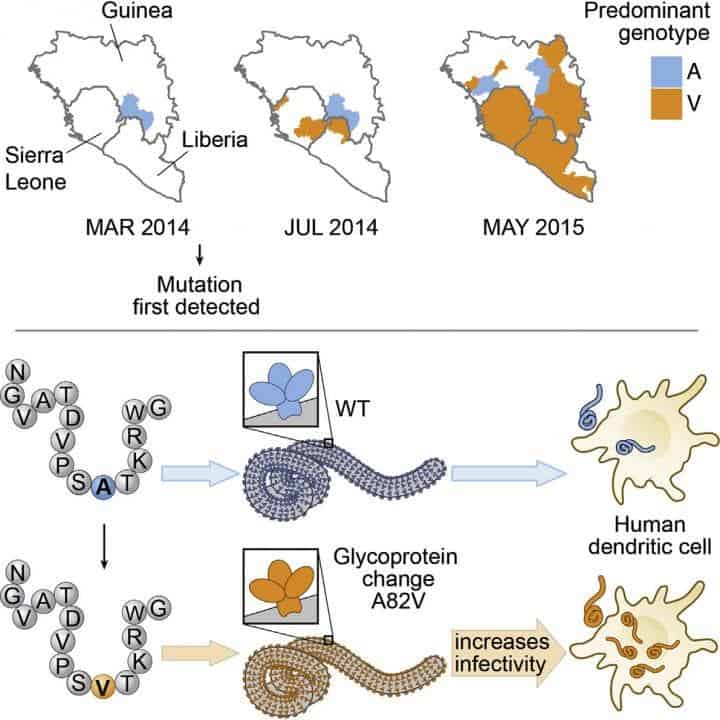The Ebola epidemic which killed more than 11,300 people between 2013 and 2016 had a secret weapon, researchers found.

This figure depicts the finding that an Ebola glycoprotein mutant that arose early during the West African epidemic increases infectivity of human cells and may have contributed to increased mortality. Image credits: Luban et al./Cell 2016
Scientists identified a mutation that changes the part of the virus which fits into the receptors of hosts cell. The mutant viruses were “better at fitting into the lock and got into the cell better,” said Jeremy Luban, a virologist at the University of Massachusetts Medical School, who led one of the studies describing the mutation. This mutation allowed it to cause such a long-lasting and devastating outbreak.
“Ebola virus is thought to circulate in an unknown animal reservoir and to only rarely cross over into people. When the virus does cross over, the effect has been devastating to those people who are infected. Until recently, the human disease outbreaks have been short lived, and the virus has had little opportunity to adapt genetically to the human host,” says Luban.
Basically, within months, the mutant strain of the virus was dominating the outbreak. But interestingly, the mutation doesn’t improve its chances in other creatures. So in essence, the virus developed a mutation tailored specifically for humans, targeting our species and nothing else. That’s a bit worrying, to say the least.
“If you introduce a virus into a new host, like humans, it may need to adapt to better infect and spread in that host,” says Jonathan Ball, a virologist at the University of Nottingham and co-author of the other paper.
If anything, this indicates that we have to keep a closer eye on such outbreaks. The Ebola pandemic was way more serious than most people anticipated, and in the future things could get even worse. After all, we don’t really understand viral evolution that well.
“I think really what it does say is you need to be carefully monitoring what’s happening to viruses as they spill over,” Ball said. “We know that these viruses are causing human infection, we know that they’re evolving, but do we really know what that evolution means?”









